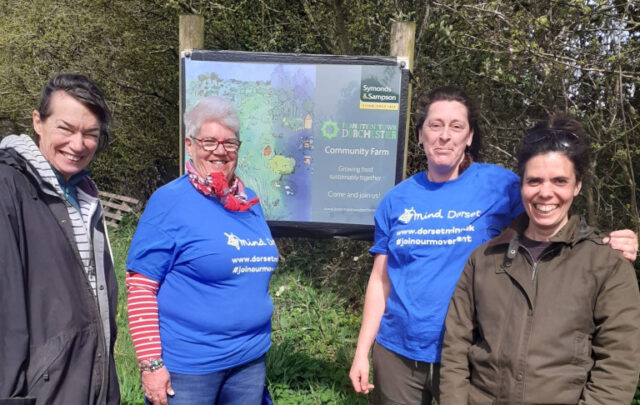WHY DINNER IS HOSTED AND SHARED, BUT NOT SERVED
The feast begins as a beautiful summer’s day spent touring a farm and meeting new friends draws to a close.
Bashir Munye serves as head chef and host at an African-inspired feast he organized with Black Creek Community Farm.
I asked him what it felt like to serve a meal he had prepared. I don’t use that term, he replied, because for people of African heritage, service recalls memories of slavery and servitude.
“I do not serve. I share and host,” Bashir says. “I am re-appropriating the term in a different way.”
Why not? Everything else about the day and the farm was different!
Feast your eyes on this photo-essay, where you will gain many unusual insights into the “community of food practice” maturing in Toronto as people in the city link local food, global foods, urban agriculture, community development, food security, food sovereignty, multiculturalism and interculturalism.
To learn more about Bashir’s food dreams, see here.
FOOD IS NOT OUT OF THE WOODS YET
Toronto’s Black Creek Community Farm is surrounded on two sides by brush and forest that have grown back since the land was set aside for Black Creek Pioneer Village.
The kind of farming promoted by the Community Farm is called agro-ecology (described here). It does not require that forests be “conquered” and cleared before farming can begin. Instead, agriculture can be partly a “walk in the park.”
Nature, farmers and communities are all treated respectfully in this new concept, referred to as “multifunctionality” (described here).
Forests produce food, directly and indirectly. Here, Community Farm director Leticia Boahen introduces us to the Farm’s “pollinator hotel.” The hotel is also the entrance to a variety of community uses, including a children’s garden and a picnic area. It also leads into a wilderness trail — which is part of the new connective and inter-connective tissue (see here, for example) being imagined for what is called the Jane-Finch Corridor. The Community Farm is a major asset of this emerging community.
We want the community to take ownership of the park, says Leticia — to hang out here, to bake pizza in the community oven, to come here to play, relax, learn, volunteer, work and manage.
SUPPORT MUSHROOMING ALONG THE WAY
Using wooded areas to grow food is sometimes called agro-forestry, a practice that was widespread among Indigenous peoples who lived for millennia in what is now Canada.
As revealed here and here, First Nations peoples used woodlands for countless medicinal plants, wild garlic, ginger and mushrooms, as well as for the more famous maple syrup.
The Community Farm upholds this tradition with shitake mushrooms. Spores are inserted into the holes in the logs Leticia points to. The logs are soaked in water, and in about a week there are mushrooms to pick and sell — about six pounds worth for each log over every season.
GLOCAL FOODS AND THE RIGHT SPIRIT CULTIVATED HERE
Creating conditions for the new farm started in 2005, with 15 teens led by Toronto master gardener and Toronto Parks and Rec employee Solomon Boye. Boye was a pioneer of season extension and other “glocal” techniques. In partnership with the Toronto Food Policy Council, Boye planned an urban agriculture strategy that enabled newcomers from around the world to enjoy the tastes of their homeland in their new home in Toronto. “Glocal food” started here at Black Creek.
Boye convinced his crew to use hand tools, as seen here, rather than heavy equipment. Born in Ghana, Boye was raised with the watchword: “if you want to find God, you have to go to the garden and dig him out.” Back in 2005, he told me of his spiritual belief that “to enjoy peace and equilibrium, we need to see land like it is part of us, and treat it without aggression, as if we need its permission.”
This spirit is part of the heritage of Black Creek Community Farm. It is still farmed on organic principles, under the supervision of Everdale Organic Farm and Environmental Learning Centre.
FORGOTTEN FOODS ARE STILL REMEMBERED HERE
Tinashe Kanengoni holds one of the tiger nuts he’s growing in the experimental plot. Tiger nuts have developed a reputation as a “superfood.” They thrive throughout Africa and Asia, and also in Spain.
Tinashe wants to coax them along with season extension techniques to survive in southern Ontario. That way, they can help revive pride in the cultural heritage of the “forgotten foods of Africa” — awareness of which was suppressed during centuries of European enslavement of Africans, and later colonization of Africa. They can support a culture of healthy eating within the African diaspora. They can also earn the Community Farm a premium price. The campaign to revive forgotten foods is discussed here and here.
Unlike giant biotech seed companies, the Community Farm receives no research grants from provincial or federal agriculture departments. For all the official raves about innovation in food and agriculture, community innovation rarely gets a dime of government money. African foods remain forgotten in official agriculture circles. Who knows? By allowing them to languish out of sight and out of mind, are they leaving their seeds free for the picking and patenting by Big Food gene giants?
GREENHOUSE IN A GREEN ECONOMY
This is an unheated greenhouse. It allows Community Farm volunteers and staff to start early in the spring and work until late in the fall, and thereby grow crops that originally only grew in a warmer climate.
As long as the ground retains heat, it can nurture the roots.
Unheated greenhouses that conserve soil heat may be a game-changer for world crops and urban agriculture.
We already know that unheated greenhouses can protect crops from the likes of downpours and hail. We know they can conserve water. They also permit season extension of crops that need a little extra support to help them adapt to a colder climate than they evolved in.
Tinashe hopes this greenhouse might allow the Black Creek Community Farm to work with hard-to-grow crops that can earn them a premium price, and secure them a loyal customer base.
THE OLD MAN AND THE LAND
Tinashe, born in Zimbabwe, wears a T-shirt honoring Kwame Nkrumah, independence leader of Ghana (where Leticia was born) and leader of Pan-Africanism. Nkrumah identified with the land, and that is part of Tinashe’s identity too. That’s why he’s a farmer.
All of Africa has a land -based culture, he believes. “Land gives you home. Land is where we find the stones, the berries. It’s what we walk on. It’s what we have been displaced from,” he says. “I farm because I am reverse-engineering. How do I get to engage with the land?”
NOTHIN’ SAYS LOVIN’, LIKE SOMETHIN’ FROM THE OVEN
Leticia is proud of the one year- old baking oven, a standing invitation to join in. Bread and pizzas are what people most want to bake, she says, and the groups most likely to use the oven are kids and seniors.
The oven is also popular with the large Italian neighborhood, and with the developing neighborhood of recent refugees from Syria, both close to the Community Farm. Can we bake fish, the newcomers want to know.
The baking oven reveals two powers of food. Welsh scholar Kevin Morgan calls one of them “the convening power of food” to bring people together in public. The other follows the place-making rule set by the Project for Public Spaces, experts in what’s called “place-making.” A dynamic and happening place needs to host at least ten activities, the experts say. Each activity attracts different constituencies, for different reasons, and at different times, and each builds a whole greater than the sum of the parts, as well as a meeting place that unifies an entire range of communities.
ROLLING OUT THE WELCOME MAT (AND PILLOWS)
Chef Bashir was born in Somalia, raised in Italy, and trained in Canada. He arranged the dining room to honor the nomadic traditions of Somalia.
Nomads couldn’t cart chairs and tables around with them, but they found room for carpets and cushions. They made room for carpets and cushions because there are many messages in carpets and cushions that need to be identified in people-centered food policy.
Carpets have their practical sides, says Bashir. They are easy to cart around. And they are space efficient — they don’t monopolize an entire room with a table that’s used for a few hours a day.
But carpets also offer a message that is something of a magical ride. Carpets bring people down to earth, put them in contact with the earth, Bashir says. They also bring people closer together. They undo hierarchy, like the patriarch at the end of the table with a carving knife dispensing the food to people, one at a time.
Carpets remind us that shoes, chairs and tables are all part of a design to sever our direct connection with Nature, to mediate it with technology, and to sever our reciprocal and egalitarian relationship with one another. And a bright and artistic mat can add brightness and artistry to a meal.
THE ART AND SCIENCE OF APPETIZERS & GREETINGS
Saharla Abdulkarim is the animatrice who breathes life into the Nomadic Supper Club. In her hands, appetizers fulfill several functions.
The “manifest function,” to speak sociologese, is to do something constructive about our hunger pangs. The “latent functions” are more important. They provide an opportunity for Saharla to greet us, and make sure we feel welcomed. They let her practice “management by walking around,” and get the lay of the land in terms of how people feel. They keep people calm, and give the chefs some extra time (they have been at work since 10:00 in the morning) for some finishing touches.
The appetizer also provides a transition time for eaters to relax. They can shed the fight-or-flight energy coursing through their nervous system veins from fighting traffic or dealing with a hard day. They can move the body toward relaxing so the gut can properly digest the food about to be eaten. Appetizers are part of a slow food tradition based on deep folk insights into the foundations of healthy behaviors.
This appetizer also allows Bashir to innovate with Afro-Canadian delicacies. He prepared crisp, tangy and fermented injera instead of crackers, thereby using an ultra-healthy form of the Ethiopian grain called teff. The dish is inspired by kifti, which is raw beef marinated in butter and spices. Instead of beef, Bashir uses red beets which give the same color, but which can be grown at the Community Farm.
This multi-functionalism is par for the course in urban agriculture and local food. Instead of specializing in one function and doing it very well, providing “economies of scale,” multi-functional practices achieve several goals, and thereby provide “economies of scope.” Agriculture can be multi-functional, and so can food.
That’s the message coming out of this partnership between the Nomadic Supper Club, Black Creek Community Farm, Everdale Learning Centre, and the Greenbelt Fund.
FRONT OF HOUSE, BACK OF HOUSE
All restaurants have a front and back of house — the place where the work is done but shouldn’t be seen, and the place where guests see whatever’s in front of their eyes.
All theaters have a front stage and backstage for the same reason.
The food system has a front and back of house too. The back of house for conventional, cheap and junk food includes billions in subsidies for biotech research and corn production.
The back of house for local, sustainable and innovative foods usually includes foundations and civil society organizations, and budgets in the thousands, not millions, of dollars.
This meal was no exception. Some of Bashir’s efforts are supported by the Greenbelt Fund, which values the work he is doing to popularize crops such as calaloo, okra, tiger nut and teff. With a little more research and public education, these crops can be grown in the Greenbelt, just miles away from where Torontonians of many different food cultures live. Local food and local jobs can be brought together for the benefit of health, the economy and the environment.
Sagal Dualeh, enjoying this experience with me, works with the Greenbelt Fund, and is a champion of Bashir’s and the Black Creek Community Farm’s work.
Others in the back of house who were not at the feast include the civil society organization Everdale Environmental Learning Centre. Their staff taught Black Creek Community Farm staff and volunteers to apply organic farming skills to the land. Everdale continues to sponsor the Community Farm, and its 15 full and part-time staff.
GOOD HOMBRES
I often conclude my public talks on food and cities with this picture of Black Creek Community farm employees and volunteers.
Leticia, the director of Black Creek Community Farm, refers to the Jane-Finch community where she lives and works as “a vital community.” I’m sure many people do a double-take when they hear that description. The news media often portray the area as crime-ridden, while government staff refer to it as high-needs, at-risk, underprivileged, and so on. Many people also do a double-take when they see this picture of young people just hanging after a hard day’s work. They don’t look like gang members!!!
When we refer to individuals who are different, it’s becoming the norm to refer to them as people first — as in “people with disabilities,” or “people on low income,” or “people who are economically comfortable.” That way, our appreciation of people always puts their humanity first.
The same rule should apply to communities. Some communities are under-served, and receive fewer resources than others. Jane-Finch is one of those communities, as a hundred instances of government under-funding confirm.
But the Jane-Finch community is vital — as Black Creek Community Farm, which draws from it, confirms.





